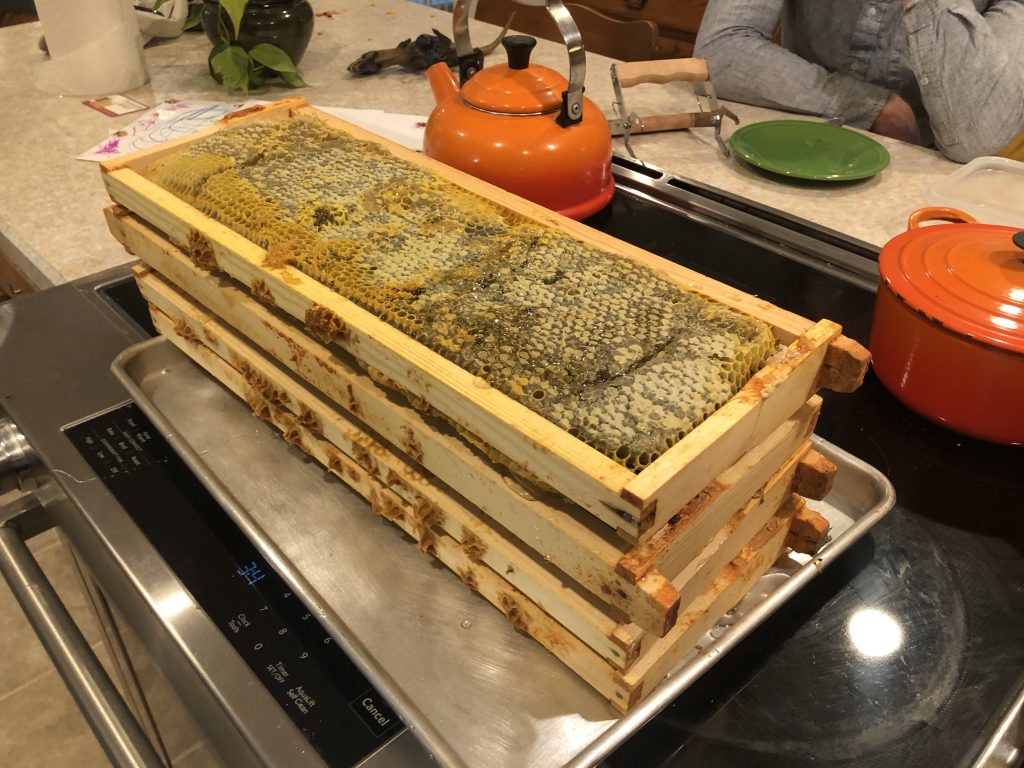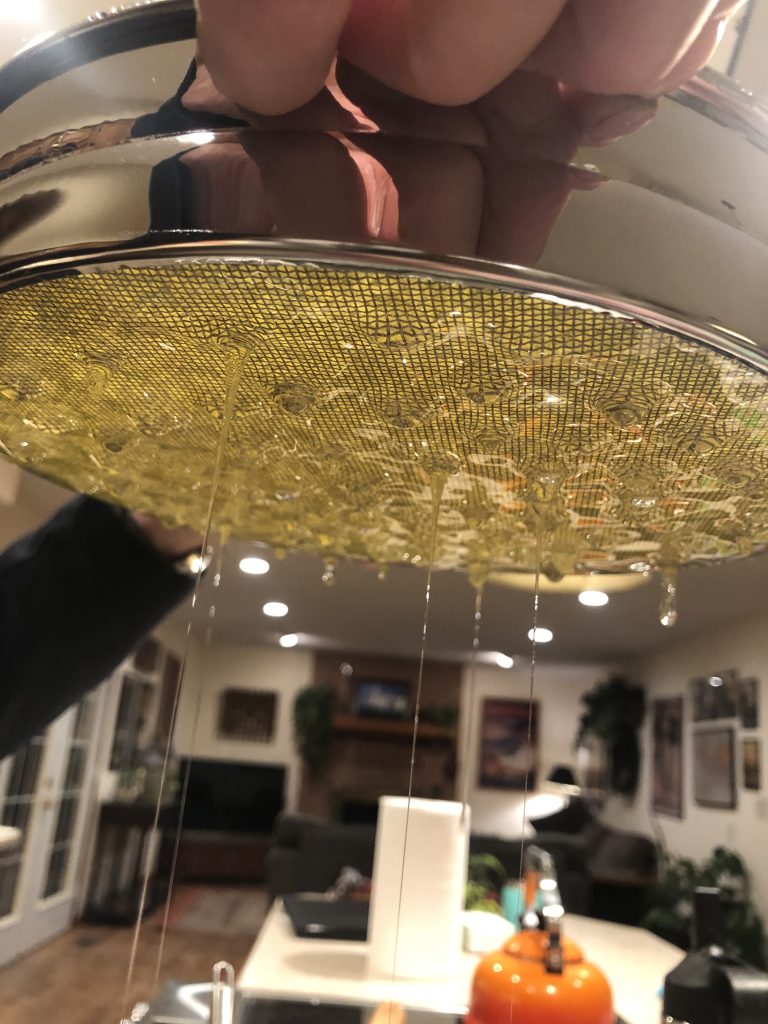Honey is a delicious and flavorful alternative sweetener to use in place of white sugar. But if you stroll down the grocery aisle, you’ll see a plethora of different honeys with different terms on the label; several of them touting the term ‘raw honey.’
Let’s first touch on how ‘regular’ store honey is processed. Commercial honey (regular and raw) often comes from a larger corporation that is purchasing from various large apiary operations. The honey is combined together for a more uniform color & flavor. It is extensively filtered to remove not only larger particles such as spare bits of wax but also tiny particles of pollen. Then it is pasteurized. However, pasteurization in honey is more to do with the appearance and shelf life than the safety of consuming it.
Honey is acidic and if harvested at the right time (once the honey cells have been capped over with wax), it has a low moisture content of 14-18%. With this combination, honey is a hostile environment for bacteria. Pasteurization for honey dissolves any sugar crystals that are starting to form, and heating it reduces the likelihood of honey crystalizing. This is purely for aesthetic & textural reasons, crystallization does not affect the safety or flavor of the honey.
The other reason to pasteurize honey is to kill any potential natural yeasts, which will keep it from fermenting. However, the yeasts remain inactive when the honey is at the appropriate moisture content, so this is a preventative measure in case the honey were to have extra moisture added to it.
Now on to the raw honey!

Honey is comprised of concentrated nectar and enzymes from the bees that have processed it. Plant nectars have natural antioxidants which remain once converted into honey. It is widely believed that the pasteurization process reduces the amount of antioxidants in the honey. While honey should be consumed in moderation, raw honey could be a good addition to an antioxidant rich diet.
Raw honey is also naturally antimicrobial. In fact, honey has been used in wound treatments tracing all the way back to ancient Egypt. It can help wounds heal both by creating an environment in the wound that is hostile to bacteria, fungi, and viruses, and also with its anti inflammatory and antioxidant properties.
Raw honey is typically minimally filtered – though you may see claims of raw honey being ‘unfiltered,’ which is not entirely correct. If the raw honey was entirely unfiltered, you would see bits of bee legs and other undesirable things in it. While that detritus isn’t harmful, most people would choose to not see bee legs on their morning toast.
When I filter our raw honey, I have a 2 layer mesh sieve that is made for filtering honey. That’s it. It literally just gets the larger particles out, but leaves the beneficial things still in the honey.

As an important note in closing, I am not a doctor – if you have questions or concerns regarding pasteurized vs raw honey, please consult a physician.

